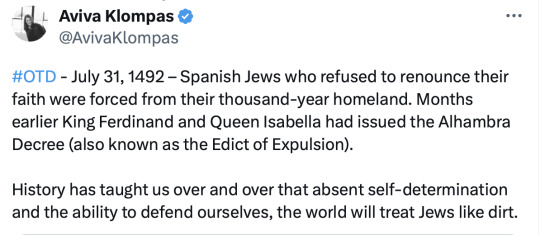#1492
Text

2K notes
·
View notes
Text
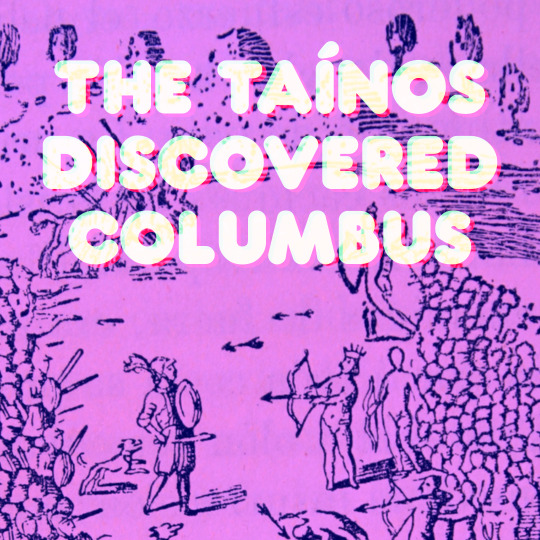
On October 12, 1492, Columbus arrived on the shores of the Caribbean, the now-called Bahamas, and the Taíno people welcomed him and his crew with respect and great care. Their kindness was repaid with vicious cruelty and enslavement.
The horrors of genocide left no one untouched on Turtle Island and Abya Yala, but the Taínos were the first to encounter this scourge. There aren't enough people who call them by name and claim a ubiquitous "indigenous peoples" encountered Columbus.
Know and name the Taíno and the ways they suffered as a result of First Contact.
And also the ways they have persisted and survived to this day. Check out the United Confederation of Taíno People (UCTP) / Confederación Unida De El Pueblo Taíno (CUPT) as a place to start.

The Taino peoples are not a monolith and include many different tribes and areas.
Image 1: Cristobal Colón, 1893 "La gran batalla que tuvo el almirante con el Rey Guarionex y cien mil indios en la Vega Real" | Wikipedia
Image 2: "Distribución de los arahuacos taínos, caribes y guanahatabeyes en las Antillas, en el tiempo de la llegada de los españoles." | Wikipedia
#indigenous peoples day#indigenous history#taino#tainos#taino culture#indigenous erasure#christopher columbus#caribbean indigenous#fuck columbus#1492#ndn tumblr#ndn tag#ndn country#ndn#native american#first nations#turtle island#abya yala#indigenous people#indigenous
2K notes
·
View notes
Photo

Native American tribes in what is now the continental US in 1492.
636 notes
·
View notes
Text
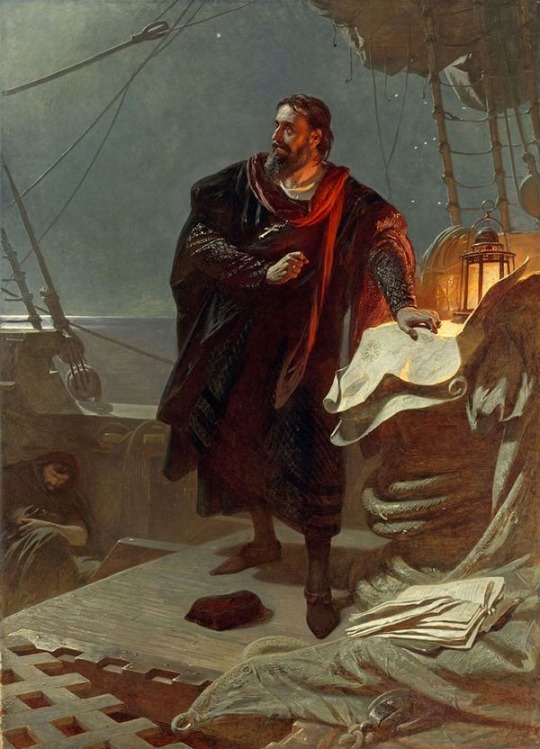
Christopher Columbus by Carl von Piloty
#christopher columbus#art#carl von piloty#explorer#explorers#exploration#discovery#new world#america#americas#europe#european#christianity#spain#spanish#1492#history#conquest#ship#map#maps#caribbean#lamp#christian#voyage#niña#pinta#santa maria#atlantic ocean#voyages
106 notes
·
View notes
Text

50 notes
·
View notes
Photo

America: Being the Latest, and Most Accurate Description of the New World (1671)
#america#north america#south america#central america#west indies#the new world#1492#aztec empire#inca empire#american indians
71 notes
·
View notes
Photo

Pinta, Nina and Santa Maria (2022)
#pinta nina santa maria#pinta#nina#santa maria ship#christopher columbus#columbus#1492#1492 conquest of paradise#medieval#ship#marysmirages#artist#painting#sea landscape#art#illustration
190 notes
·
View notes
Photo
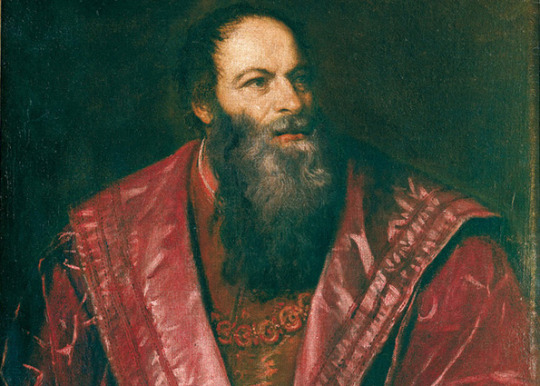
Pietro Aretino (deceased)
Gender: Male
Sexuality: Gay
DOB: 20 April 1492
RIP: 21 October 1556
Ethnicity: White - Italian
Occupation: Writer, playwright, poet
#Pietro Aretino#lgbt history#lgbt#lgbtq#lgbt people#male#gay#1492#rip#historical#white#italian#writer#playwright#poet
52 notes
·
View notes
Photo
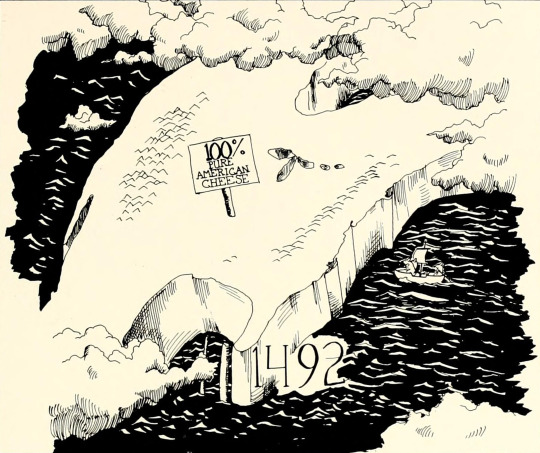
Source details and larger version.
Pet cheese, fairy cheese, cheese hats, cheese wheels: my collection of vintage cheese is growing.
13 notes
·
View notes
Text
I just looked up when was “hell nah” first used and it said some shit like 1500’s so here’s the first thing that came to my mind lol, enjoy!
Columbus: duuude, guess what!
Random person: what?
Columbus: i just discovered a new, cooler way to go to India!
Random person: umm… gimme a map!
*map appears*
Random person: bish, that ain’t India that’s a whole ass new continent!
Columbus: HELL NAHHH
(It’s 2:00 so pls forgive me)
#lol#idk#history#Columbus#christopher columbus#history memes#history jokes#hell nah#1492#american#discovering America#idek#india#incorrect history quotes#incorrect quotes#random stuff#2:00 am
3 notes
·
View notes
Photo

Global distribution of Christians in the year 1492.
Red - Catholics, purple - Orthodox Christians, blue - Hussites, orange - Church of the East, magenta - Oriental Orthodox, white - non Christians
163 notes
·
View notes
Photo

“Resilience: Living in a Pandemic since 1492” (2021),
Osceola Red Shirt (Oglala Lakota) and Genevieve Red Shirt (Rosebud Sioux, Chickasaw, Taíno) ,
Wicket and Craig tooling leather, glass, metal, sweet grass, thread, hand-painted imitation eagle feathers, ermine pelts, red wool, red horsehair, buckskin leather, re-purposed Buffalo felt hat.
Collection of Agnes Hsu-Tang, PhD and Oscar Tang
Photo by Two Guns Leather
#art#sculpture#surreal#resilience#pandemic#1492#osceola red shirt#oglala lakota#genevieve re shirt#rosebud sioux#taino#sioux#leather#metal#glass#united states#human crisis#crisis#climate change#climate crisis
13 notes
·
View notes
Text
As far as we know, the first testimony of a change in climate in America comes from Gonzalo Fernández de Oviedo, military governor in Santo Domingo and royal chronicler of the Indies. When he was writing, in 1548, the improvement of the American climate was no longer a mere hope, as in Columbus, but an attested, widely shared view [...] The basis of climate improvement, according to Oviedo, was political: desiccation and cooling were due to ‘Spanish sovereignty, which tames (doma) and mellows (aplaca) these regions and their rigours, just as it tames the Indians and animals inhabiting them.’ Climate change reflected, hallowed, and sanctified the transition from one sovereignty to another. If, in the initial stages of the conquest, Hispaniola was hot and humid, this was because it had been possessed ‘for so long by savage peoples’; because ‘neither trodden nor ploughed . . . the forests grew incessantly’; and because ‘its very few paths were like rabbit tracks.’ The non-domination of nature, and a relationship to the land akin to that of animals, invalidated Indian claims to sovereignty. Oviedo envisaged his natural history as a providentialist treatise on behalf of the global reign of Charles V. Climate improvement attested to a divine plan for Spanish sovereignty over the New World.
— Jean-Baptiste Fressoz & Fabien Locher (translated by Gregory Elliott), Chaos in the Heavens: The Forgotten History of Climate Change.
Follow Diary of a Philosopher for more quotes!
#Book Quotes#Climate change#environmentalism#ecology#global warming#quote#quotes#colonisation#colonialism#imperialism#America#native american#Latin America#History quote#New World#climate crisis#climate emergency#environment#1492#gradblr#studyblr#book quote#academia#dark academia#chaotic academia#solarpunk#ecopunk#green#nature
2 notes
·
View notes
Text
I’ve made over 1000 cookies today.
Wild.
#I could probably do some math one sec#1492#ONE THOUSAND FOUR HUNDRED AND NINTY TWO COOKIES#Holy fuck
3 notes
·
View notes
Video
Relaxing in the grass by Ursula Dubrick
Via Flickr:
Bear cub relaxing in the grass while mom is nearby. Lake Clark National Park, Alaska
#1492#Lake Clark National Park#bear cub#Alaskan coastal brown bear#baby bear#Alaska wildlife#NikonD850#alaska#bear#cub#flickr
31 notes
·
View notes
